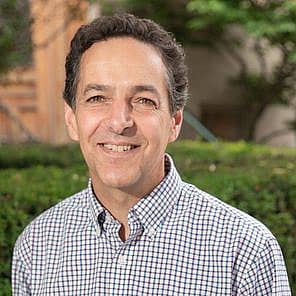A Yankee Recipe For Success
David Brooks recently wrote a column, “Putting Grit in its Place,” in which he references the current fascination with this formative four-letter word. He initially defines grit more in the negative as “the ability to trudge through long stretches of difficulty.” Parents often invoke this definition of grit to urge their sons and daughters to persevere through arduous, tedious tasks that they believe will lay the groundwork for future success. Spending hours with their workbook on the new SAT comes to mind.
But grit without inspiration, he points out – grit that is not in the service of a skill or goal that matters deeply to the grinder – is a misguided value that understandably leaves young people uninspired.
This reminds me of a favorite line from a wonderful literacy workshop run by legends in the field, Kylene Beers and Robert Probst: “rigor without relevance is just hard!” They used the great example of a child who uses CliffNotes to survive the boring assigned reading in his English class but applies real rigor to deciphering and reading between the lines of a text message from his girlfriend. (“She doesn’t usually ask to meet me between periods 1 and 2. And why would we ‘need to talk’? Where’s the usual string of emojis?”) Rigor comes from the attention we bring to a text rather than from the pedigree of the text itself. When deep analysis matters deeply, it happens without a self-conscious need to cultivate the virtue of grit.
Grit has its place, for sure, but education that begins with inspiration, relevance, and internal motivation is a much better starting point. This brings me to my recent five-day, 14-school tour of New Hampshire boarding schools. My fellow travelers and I, a group of consultants from across the country who represent students from our inner cities and around the world, met with our share of guides and presenters who followed protocol and hosted us with studied grace. Many times each day, though, authentic joy and inspiration broke through in the personalities of our tour guides and in the enthusiasm of teachers and leaders who define school by classes that matter, hands-on experiences, and student-directed inquiry. When these qualities are present, grit and rigor are relevant and flow naturally in a way that feeds rather than saps energy.
And this refreshing sense of school life and grit without the tedium came in many different forms. It came from a wonderfully enthusiastic tour guide with significant learning differences and a personality that filled the rooms and hallways we shared with him. In response to questions about learning support, he explained that many of his peers met with tutors 2-3 times a week, but he needed to see someone every day, and even that was often not enough! He laughed rather than cringed, spoke playfully rather than shamefully, and impressed all of us as someone who we’d like to emulate – even as adults – in his comfort with himself and his obvious joy for life. He had chosen a different curriculum than some of his peers at the school, but he spoke with excitement about a school trip to Spain and an Environmental Science class conducted almost entirely on the school’s thousand-acre campus. He chose a different curriculum, not a worse one, and he clearly grew and learned lessons that mattered while showing grit in seeking out the help he needed to succeed on his chosen path. I was sorry when he said goodbye and turned us over to the post-tour part of our program, but no one who met him had any doubt that he would be a success — a happy person with rich friendships and varied interests, regardless of his standardized test scores.
Another memorable guide, a diminutive, fast-talker from Thailand showed similar enthusiasm and energy along with verbal skills and an intellect that seemed too large for his 4’10’’ freshman frame. He had been homeschooled, had been immediately enrolled in a higher level math class that fascinated him, and clearly relished the challenge of full days and long hours of homework that fed an insatiable appetite to learn, … and to learn NOW! He practically sprinted around campus, pausing to eat an egg sandwich at one point after explaining that he had come from crew that morning – a coxswain for sure — and only had time for a bagel before his first class. He knew the right buildings to show us, gave us some relevant facts to leave us duly impressed with the school’s facilities and human resources, but he was the show. Another student entirely comfortable in his own skin, with a sense of humor and playfulness that belied, or maybe found its origin in, the five hours of homework he had done the night before, and each of the preceding nights that week. Grit? He wouldn’t have called it that. He would have called it an amazing series of opportunities that he couldn’t get enough of.
Other images from my week in NH captured this sense of education that begins with inspiration:
A woodshop with saws humming and fiberglass drying on the bottom of a boat that a junior boy is eagerly finishing in time for summer use back at home.
A group of musicians jamming in a state-of-the-art music studio with a tech crew adjusting levels on an elaborate motherboard in the adjacent command center.
An environmental studies classroom, on the second floor of an outbuilding, with stuffed roadkill and a full range of preserved animals from the surrounding hills. Even consultants were drawn into the guessing game, “What kind of animal is that? A marmot?” Apparently students almost never spend the whole period indoors.
A jewelry-making studio with beautiful pounded silver earrings proudly displayed above a workbench.
A graphic design workshop in which students competed to provide a logo and marketing campaign for a businesswoman in town.
An observatory on top of a hill with an endless NH sky just waiting for nightfall.
Students weeding the school’s sizeable garden, part of the supply source for one of the only all-organic school cafeterias in the country, and doing so with wordless intensity (apparently they had taken a vow of silence as part of their study of Medieval monastic traditions).
A senior hockey player and tour guide who felt comfortable enough to take a risk and join the school’s annual musical production with some of her teammates. She shared her new appreciation of the courage and skill it takes to act, sing, and dance on stage.
A school dedicated to heterogenous classes in which less traditionally skilled students are not left to their own devices but seated at pods in groups of differently-able peers within the same classes. A concerted effort goes into celebrating diversity, recognizing each person’s strengths, and cooperating to learn — and learning to cooperate — rather than competing for grades.
Clearly, these schools set a high bar and are engaged in a most healthy sort of arms race to out-do one another in finding ways to inspire and empower each unique student to take education into his or her own hands.
One last image and brief story capture a different essential feature woven through all that these schools — and all good schools — do:
No longer part of any official school program, I was one of the last people from our tour to leave a building in which we had just enjoyed a panel discussion from an incredibly diverse group of young men and woman. A senior on the panel had described herself as an angry inner-city kid who came to school and got into fights with teachers and students alike. She explained how her advisor listened patiently, “like a saint,” she said, and took her to a local coffeehouse to cool off, accepting her just as she was and also helping to coach her when the time was right to see things from different perspectives. She explained how this advisor had become close to her family as well and how much fun they all had when she visited the family in New York City. As I checked my phone and picked up my backpack to catch up with my group, a car pulled up and this same student from the panel hopped joyfully into the passenger seat as her advisor, a teacher I’d met earlier in the day, gathered a small group for another advisory outing into town.
Caring relationships are clearly part of the equation that leads to inspiration and, as a by-product, grit. The kind of grit that isn’t antithetical to joy. I’m eager to send some of my students and their families to open houses in New Hampshire this fall to see schools that know how to put grit in its place.



